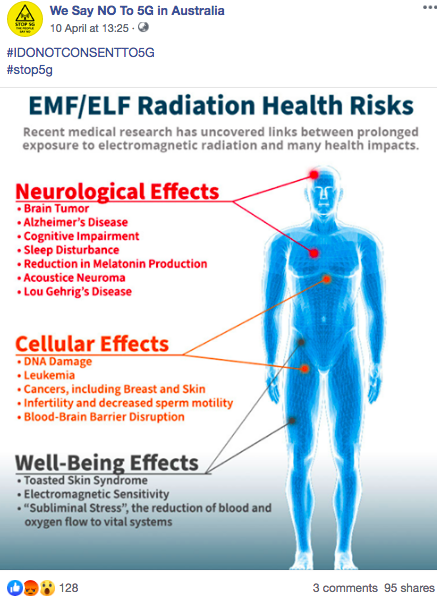This article discusses the subject of 5G radiation. It is a non-ionizing type of electromagnetic radiation. Since 5G radiation is small, it doesn't have the ability to break the chemical bonds of biological tissue or cause any changes to cells. 5g towers radiation 's not clear whether the effects of 5G radiation alter the risk of skin cancer, and no evidence has been found to suggest it may cause any other diseases.
High-frequency millimeter radiation
High-frequency millimeter-wave radiation from mobile devices and wireless networks could cause health effects to human beings. There are several ways in which this radiation could cause harm. In certain instances radiation may cause damage to someone's DNA. In other instances, it may cause damage to other areas within the body such as the brain.
Recent research has shown that 5G technology can cause tissue heating. As a result, scientists from International Council on Non-Ionizing Radiation Protection (ICNIRP) has asked for a review of existing safety standards for biological and thermal radiation. The current exposure standards are not adequate to protect individuals from extreme heat when exposed to pulsed millimeter wave radiation.
Skin cancer risk
There is no definite answer to the question of whether the 5G radiation can cause skin cancer. It is however thought that 5G RF-EMFs behave much like high-LET ionizing radiations. In turn, they may cause excessive levels of free radicals in the skin. The FCC has not issued any specific guidelines regarding the risks of 5G technology. Consequently, the debate on the subject continues.
While there are plenty of studies that examine the impact of radio waves that are higher frequency on the human body, they have remained largely limited in their scope. However, there is concern over the effects of millimeter-wavelength exposure on oxidative stress and gene expression. These effects may extend to the skin and various organs, including the brain.
The impact of other illnesses
An innovative new technology in wireless called 5G is rapidly growing in popularity, but scientists are warning of its potential health hazards. 5G technology is expected to significantly increase the quantity of electromagnetic radiation found in our environment. This is a concern that has sparked debates in many countries which includes Switzerland. In September 2017 390 doctors and scientists were in favor of the suspension of 5G technology. This motion was not heeded by the European Commission, which is in charge of regulating the use of 5G technology.
As a result it is necessary to conduct more research to assess the health effects of 5G. However studies have proven that 5G does not cause the same negative effects on humans as the radiofrequency from the older mobile networks. Also, 5g radiation symptoms doesn't spread an entirely new strain of coronavirus. In addition it doesn't make people more vulnerable to infections caused by viruses.
The measurement of exposure
Monitoring exposure to radiation from 5G is an important aspect in ensuring the safety of 5G networks. There are two methods to gauge exposure. One method is measuring the power of radio waves absorbed by human tissues. Another is measuring the amount of radiofrequency energy emitted from an object. Radiation frequency energy (RF) is an energy field that originates directly from radio receivers.

In the United States, the FCC has imposed a restriction on the energy density of 5G mobile devices. These tests can only measure power density at the distance of only a few inches. it is the FCC does not have to measure each beam. However, it is possible to determine the energy density for each beam can be estimated through computer simulation. The worst case scenario is selected based on the beam's configuration. each beam.
Study limitations
There's been plenty of debate about whether the effects of 5G radiation are detrimental to human health. For instance, the Swiss authorities, for example has issued an assessment that concludes that the technology is not likely to cause negative health consequences in the short-term, but there are no studies that show long-term impacts. But, the report has several issues and bias in reportage.
The power and frequency of radio waves that generate energy are determined by the frequency. 5g towers radiation carried by a millimetre wave will be identical to that of current radio waves however, they're smaller in size and more suitable for environments with high density because they cannot be easily block by walls or glass. High-density urban areas would require a large number of small, low-power sites, and suburban areas will benefit from 5G networks that operate at lower frequency.
